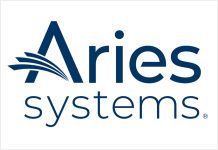
BioMed Central has launched a new semantically-enriched search tool, Cases Database, which aims to enhance the discovery, filtering and aggregation of medical case reports from many journals. Open access to journal articles published under with Creative Commons licenses which permit text mining enable the literature to be reused as a resource for scientific discovery. We are seeking collaborations with other publishers to facilitate text mining and help make case reports a more valuable part of the literature. More than 11,000 cases are available to be freely searched with Cases Database.
Open access publishing continues to grow, and at a rate faster than the overall rate of growth of science publishing. Aside from the increasing support from funders and institutions for open access to publicly funded research, open access journals are proliferating partly because of the comparatively low costs associated with launching an online-only publication. But a question sometimes asked of publishers is how, with the rapid expansion of the literature, particularly in medicine (figure), is how readers can be expected to keep up with and find what they want to read.
Medical case reports provide detailed information about an individual patient’s diagnosis and treatment but, while often interesting and novel, are likely to be overlooked when competing with evidence-based literature on a busy clinician’s reading list. Indeed, every case can tell a different story and randomised trials do not extend to every clinical situation; patients with co-morbidities are often excluded from treatment guidelines. Moreover, new medical conditions and emergent diseases begin with a single case. Case reports can also help in understanding the mechanisms of disease and in the identification of adverse drug reactions. When intelligently filterable, aggregate-able and discoverable, a large and comprehensive corpus of peer-reviewed cases is a formidable scientific resource. So rather than fighting information overload, we should embrace it – the internet and associated technology can help solve these problems (as well as, arguably, creating them).
Cases Database uses text mining and medical term recognition to filter peer reviewed medical case reports and provide a semantically enriched search experience. The database offers structured search and filtering by condition, symptom, intervention, pathogen, patient demographic and many other data fields, allowing fast identification of relevant case reports to support clinical practice and research. Registered users can save cases, set up email alerts to new cases matching their search terms, and export their results. Cases Database will be free to access and is expected to be of particular interest to practicing clinicians, researchers, lecturers, drug regulators, patients, students and authors.
In the years following the launch of BioMed Central’s Journal of Medical Case Reports, the number of new journals publishing case reports has grown rapidly, with new titles from BMJ Group, Elsevier, Hindawi, Dove Press and others. This suggests a shift in perceptions of the value of case reports in the peer-reviewed literature. With this explosion of new journals dedicated to case reporting – and the thousands of case reports which are published across other clinical medical journals – Cases Database could become an even more powerful tool.
Journals such as Journal of Medical Case Reports help overcome the problem of case reports often being relegated to eviscerated letter formats, or being rejected from journals because of their likelihood to attract few citations, and so potentially damage a journal’s Impact Factor. The more case reports that are included in Cases Database the more useful the database is; the more useful individual cases potentially are; and the more visible publishers become who contribute content to the database. Therefore, we are looking for more journals and publishers who would like to include their authors’ case reports in the database.
Publishers including their content in Cases Database can expect increased visibility and usage of their content, as all cases in Cases Database link to the full text version of the case report on the publisher’s website. Our goal is for Cases Database to be the largest online database of peer-reviewed medical case reports.
The original publisher’s copyright and license information is indexed and displayed by Cases Database and cases from open access and subscription content can be included. Case reports published by open access publishers which use the Creative Commons attribution license permitting commercial use (CC-BY), and deposit their articles in PubMed Central, need do little to ensure their authors’ content included in Cases Database. We may already include it, as CC-BY enables unrestricted reuse provided the original source and authors are attributed.
CC-BY is strongly recommended by OASPA, and for good reasons. Allowing all re-uses of open access content including commercial use helps ensure authors get the most a value out of open access publication, which is often paid for by the authors or their funders. Non-commercial and non-derivative versions of Creative Commons attribution licenses restrict some secondary uses, including text mining by commercial organisations, unless explicit permission from the publisher or rights holder has been obtained. However, Cases Database aims to be inclusive, and the product can support and display virtually any copyright license. Case reports from Springer, BioMed Central’s parent company, and BMJ Case Reports are included in the launch version of the database. And we are working with a number of other publishers, who recognise the importance of enhanced discoverability, to include their case report content which is published under a non-CC-BY license.
Professor Michael Kidd AM, Editor-in-Chief of Journal of Medical Case Reports said, “Case reports have the potential to improve our understanding of clinical medicine and expand medical knowledge. By bringing similar case reports together, through the Cases Database, researchers and clinicians can start to look for new knowledge – new associations, new side effects, new thoughts about disease processes, new understandings about the impact of disease on our patients and our communities. This is an exciting development and is critical to the advancement of clinical medicine.”
If you are an editor or publisher looking to include your case reports in Cases Database, or if you are a reader or author who would like to recommend a journal for inclusion, please get in touch, and embrace information overload with us.
Iain Hrynaszkiewicz
Publisher, BioMed Central



























